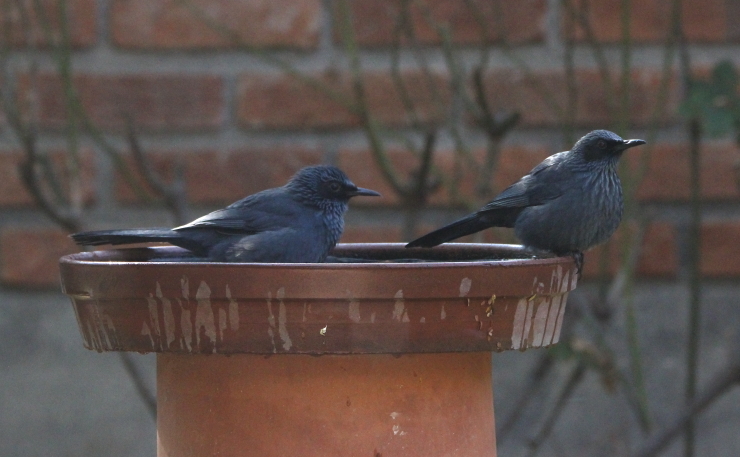
Because there ain’t no cure for those springtime blues…
You’ve probably heard of the winter blues, also known as Seasonal Affective Disorder. They refer to the depression some people experience with shorter hours of daylight, and they are not welcome.
In contrast, my spring Blues are a pair of Blue Mockingbirds that leave the nearby wild area to visit my garden, only during our warm/dry season. They know that my birdbath is a reliable source of water, especially when temperatures rise, and there is no water elsewhere. And my spring Blues are very, very welcome.
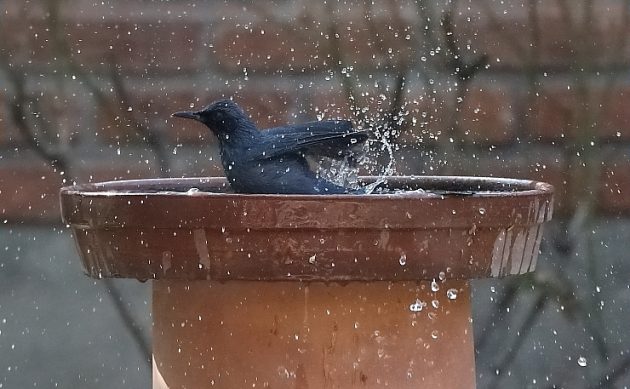
I actually feel kind of silly filling the birdbath during our summer rainy season, when Michoacán has a case of “water, water, everywhere”. During those months, the only reliable birdbath clients are way too many House Sparrows. But I figure I need to keep the watering hole on the avian map, so fill it I do.
Activity starts to pick up when the rains stop, in October or November. My garden becomes a popular spot for Warblers and Warbling Vireos from up north. But for the most part, our local endemics still prefer to stay away from suburban neighborhoods like ours, as long as the colder temperatures of winter keep them from getting too water-stressed. (Although our temperatures are never that cold here — our lows are almost all well above freezing.)
Last year, a year of extreme drought, things got busy at the old watering hole even during the depths of winter. But this year, thank God, we had plenty of rain. So it was mostly Warblers and Vireos through January.
Then, in mid-February, the winter “cold” started to give way to our 80º/50º F spring temperatures, and the locals started to turn up. A Rufous-backed Robin led the charge, on February 6. The Black-vented Orioles returned on the 15th, and the Blue Mockingbirds made their first appearance the next day. They have returned every day since. Our first Cinnamon-rumped Seedeater showed up on the 19th, and soon brought friends.
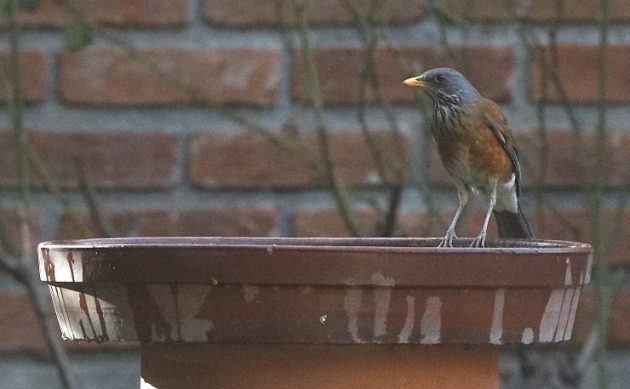
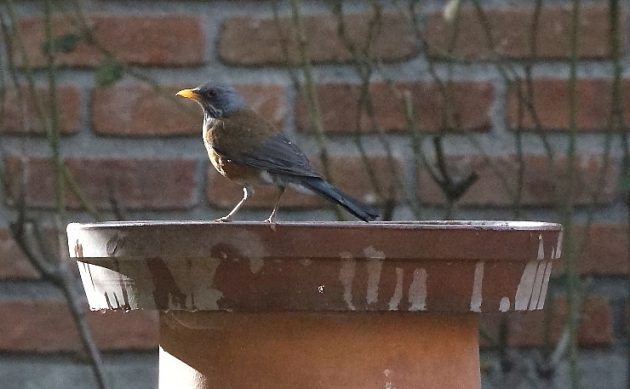
This Rufous-backed Robin showed up again, just in time to be included in this article.
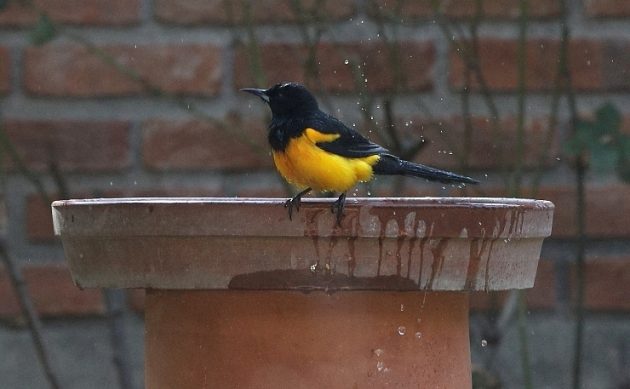
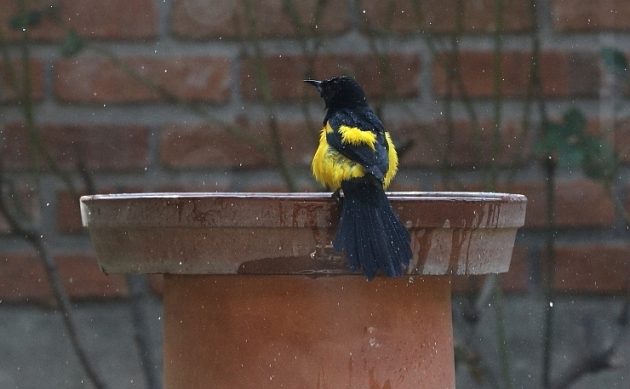
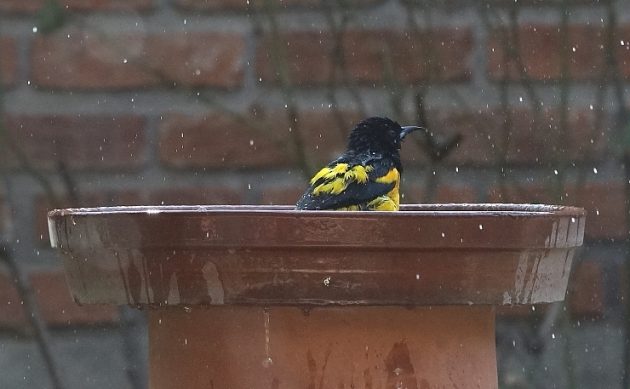
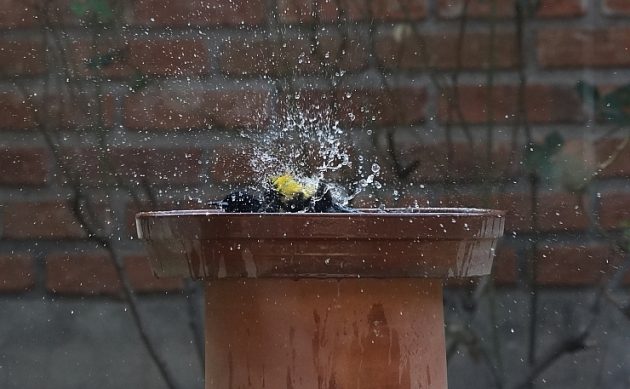
Black-vented Orioles really know how to bathe. They are one of the main reasons I often top off my birdbath by mid-morning.
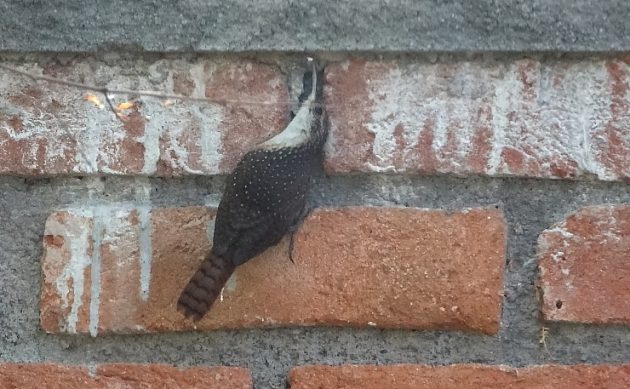
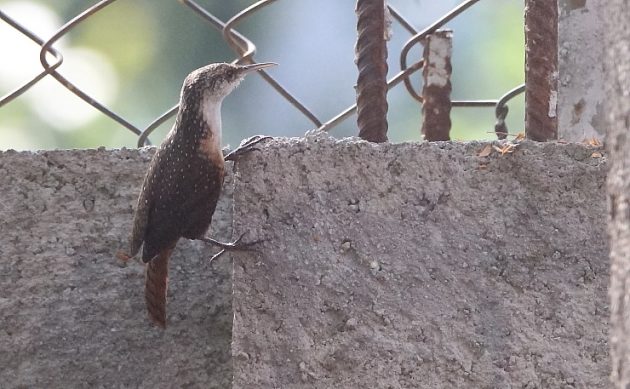
Canyon Wrens are another resident species that appears more often in the spring, even though they don’t visit the birdbath. They love vertical surfaces, and crawling into small spaces.
Meanwhile, I have yet to know just how many Wood Warblers and Warbling Vireos visit. Are there many, or do the same ones keep coming back all day long? I have managed to see 4 Warbling Vireos at the same time, 3 Nashville Warblers, 3 Yellow-rumped Warblers, and 2 Wilson’s and Orange-crowned Warblers. There seem to be only one each of the Virginia’s and Black-throated Gray Warbler, which would seem sad if I didn’t love solitude so much myself.
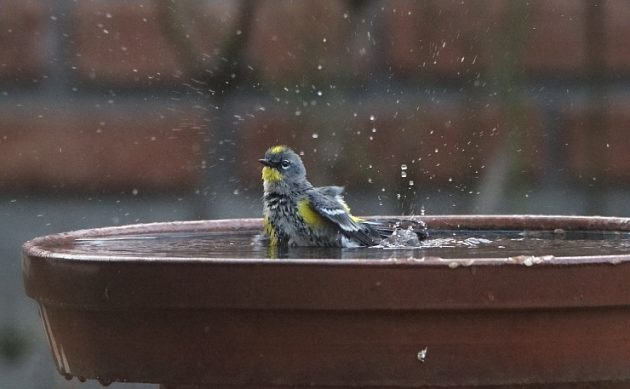
A Yellow-rumped Warbler (Audubon’s) shows how it’s done.

Orange-crowned Warbler — as always, with no orange crown to be seen.
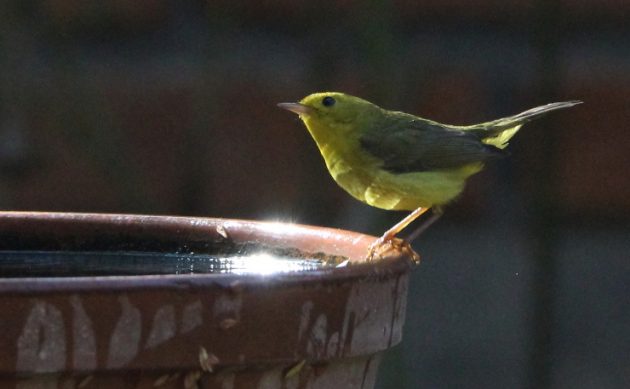
Either it was the lighting conditions, or this Wilson’s Warbler was having an epiphany.
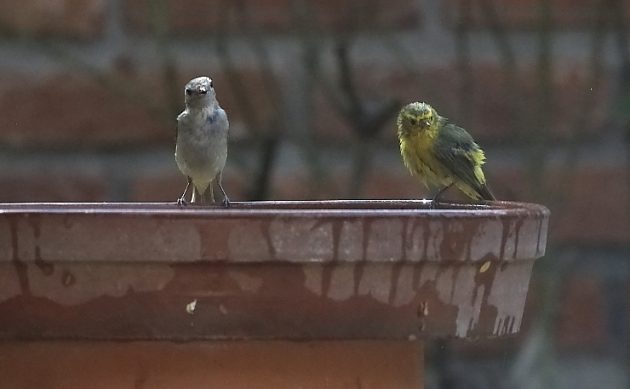
While this Wilson’s Warbler, with his Warbling Vireo friend, were just really wet.
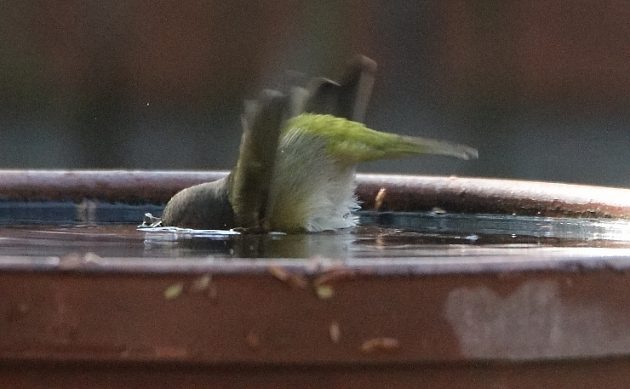
Synchronized swimming, courtesy of a Nashville Warbler.
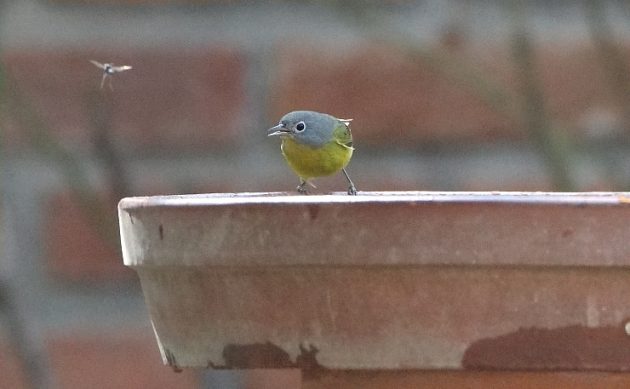
Shortly afterwards, a different, still-dry, Nashville Warbler got distracted from the task at hand.
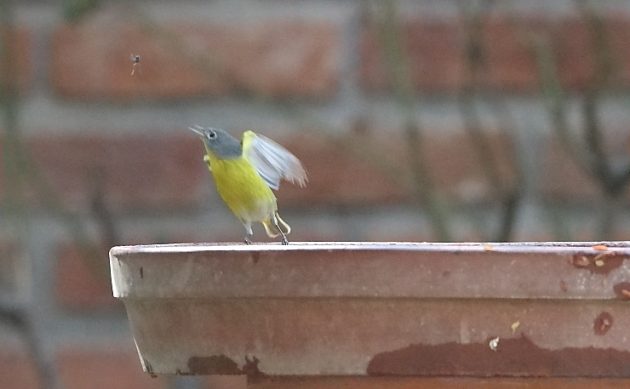
As I recall, this story did not end well for the insect.
The silliest looking visitor to my birdbath is neither a Mexican species, nor a northern migratory bird, but an invasive: the Eurasian Collared-Dove, which has only been in our neighborhood for a couple of years. Reason to get a bigger birdbath?
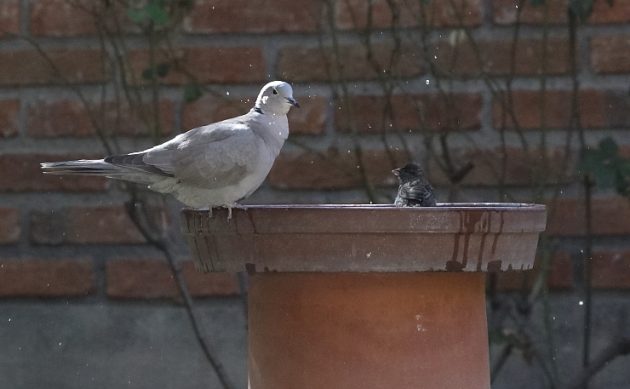
All of these photos were taken during the past few days through our back window, with a resulting slight loss of image sharpness. But they do give an idea of the species that can turn up in our yard (37 species so far this year).
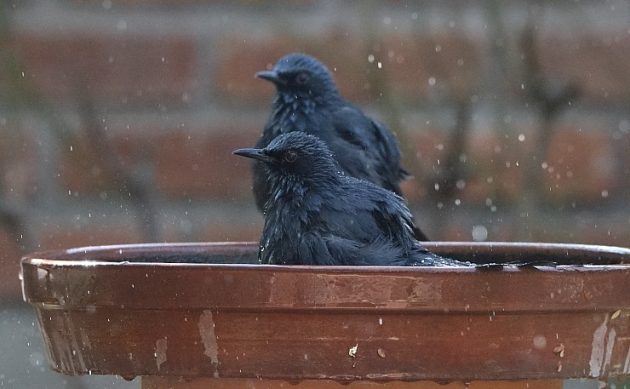
Love those Blues.











Leave a Comment